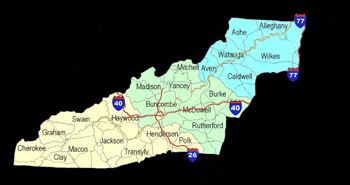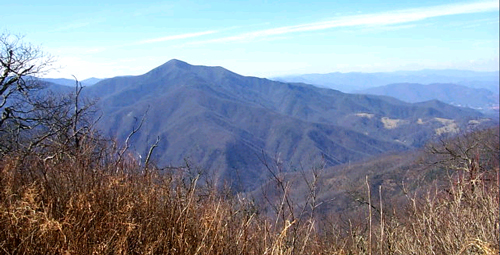One significant troop movement during
the American Revolution set the destiny of this county and
the generations that would claim it. That movement, the
march of Gen Griffith Rutherford and his 2,400 troops against
the Cherokee, introduced future settlers to the beauty of
the Appalachian Mountains. Many of those men returned to
settle this region after the Revolution – the region
became Haywood County.
At the end of the Revolution, the
boundary line of Cherokee territory was along the Blue Ridge.
In 1783, a treaty placed the boundary along the Pigeon River,
opening a part of Haywood County to settlement. Meanwhile,
Congress had agreed that soldiers and officers who had served
to the end of the war would receive land. Those granted
land began to arrive in 1785. In 1796, a land grant to David
Allison for 250,240 acres included much of what is now Haywood
County. Another land speculator of that period was Robert
Love who, with his brother Thomas, began amassing their
own land fortunes in this region and west into Tennessee.
Haywood County was officially separated
from Buncombe through a bill introduced by Gen. Thomas Love
in 1808 and the new county of Haywood became a reality in
March of 1809. The County was named in honor of the state
treasurer, John Haywood, who ironically never lived in or
visited the region.
In 1834, Robert Love purchased another
significant land holding – the remaining portion of
the Allison land grant. Continuing his father’s land
speculation, James Robert Love had accumulated a total of
375,000 acres by 1865. To put this in perspective, consider
that Haywood County today contains about 345,560 acres.
That’s about 30,000 acres less than a single family’s
total holdings 140 years ago.
| WNC Outdoors | WNC Waterfalls |



